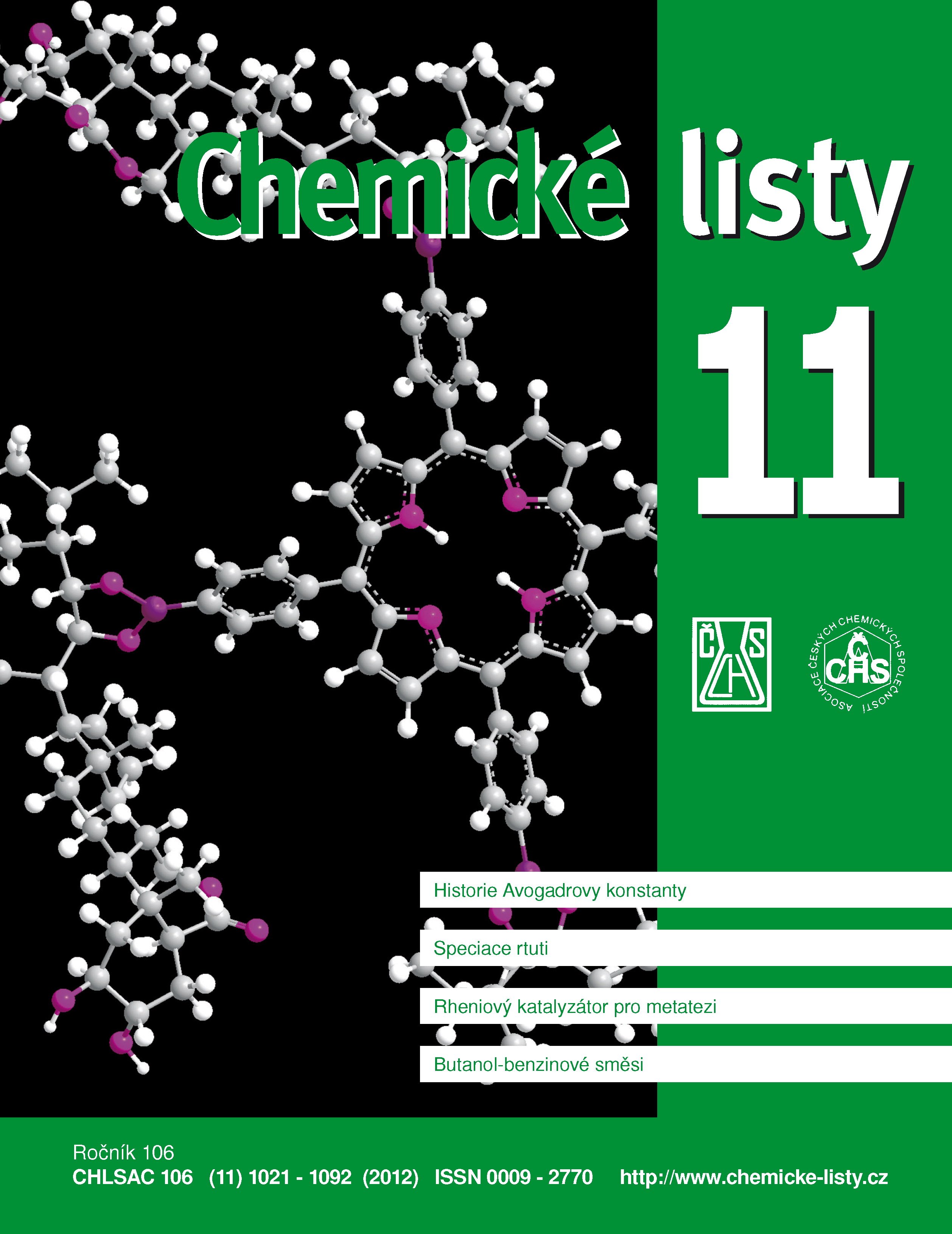Elektroimpedanční spektroskopie a její využití v chemické analýze
Klíčová slova:
elektroimpedanční spektroskopie, vodivý polymer, kvantitativní analýzaAbstrakt
A brief introduction to the theory of electrochemical impedance spectroscopy (EIS) and its application in chemical analysis using a system of metal electrodes with chemically or electrochemically deposited sensitive layers. Galvanostatic EIS provides an electrode response to AC perturbation as a function of AC frequency. A constant DC together with superimposed AC is applied to the electrode. The measured quantity is the AC component of the voltage induced by the applied current. A Pt electrode coated with electrochemically generated polythiophene was used for measurement of impedance spectra. Galvanostatic EIS was applied in both quantitative and qualitative chemical analysis of model samples containing inorganic ions. Different methods of impedance spectra analysis were used and compared. In quantitative evaluation of impedance spectra, three methods (local minimum shift, impedance at constant AC frequency and phase shift of local minimum) were tested. The most suitable evaluation method was the first mentioned one. The simultaneous qualitative and quantitative analyses can be monitored using the principal component analysis. The method confirmed the recognition of ions with polythiophene electrode only.





